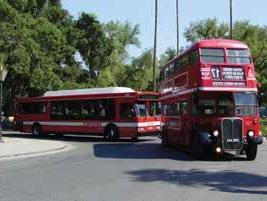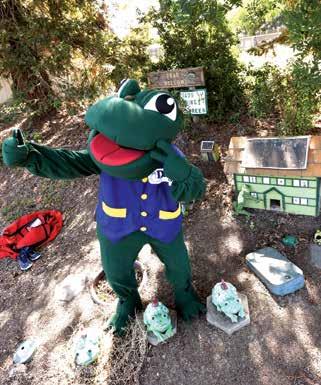
7 minute read
Catches
although most people thought the mascot was the Bossy Cow-Cow, otherwise known as Hamburger Patty. Some years ago, much to the chagrin of some of UCD’s elder alumni, students ousted the mustang, known as Ollie, in place of the cow. But now the official UCD mascot is a horse named “Gunrock.” The horse as a UCD symbol dates back to 1921, when the U.S. Army brought a stud thoroughbred son of Man o’ War named Gunrock to campus to supply high-quality stock for the cavalry.
Noise ordinance:
There’ll be no loud music in this town, and don’t even think about snoring. The Farmers Market and leaf blowers also have been the subject of Davis’ controversial and confusing noise ordinance. Violators can receive a fine.
“The Davis Children’s
Nutcracker”: This elaborate annual holiday production involves more than 250 children portraying everything from mice to snowflakes. Tickets are hard to come by and go first to family members.
Picnic Day: UCD’s annual April open house can draw up to 100,000 visitors to the university — if it doesn’t rain. Favorite events include the parade, dachshund races and the Frisbee dog contest. Some years are more raucous than event planners might like, and alcohol-related arrests and mayhem in 2010 motivated talk of canceling the event. It continues, however, as revelers try to be on their best behavior.
Quad, The: The center of the university campus, this 10-acre open space is a happening place for students to eat lunch, relax, lie in hammocks, watch student demonstrations and listen to noon speakers or musicians.
Raptor Center: Part of the School of Veterinary Medicine at UC Davis, the Raptor Center is home to all kinds of sick or injured birds of prey, including owls, falcons and eagles. Open to the public, the center is run by a group of dedicated student and community volunteers, who kept programs alive after they were threatened by budget cuts.
Recycling: We were recycling before recycling was cool. A curbside recycling program has been active for more than 40 years. Recycle your paper (newspaper, cereal-type boxes, junk mail, magazines, mixed paper), aluminum and tin cans, glass jars and bottles, and plastic soda bottles in your cool, rolling split-recycling cart. Food scraps, foodsoiled paper and yard trimmings are collected in the organics cart.
Shields, Peter J.: The father of UC Davis. In 1899, Shields was the secretary of the state Agricultural Society. In talking to farmers and friends at the State Fair, Shields learned that California had no farm college. In 1903, he began lobbying the Legislature to pass a bill creating a dairy school and experimental farm. In 1906 a site selection committee picked Davisville, and classes began in 1908.
Sister cities: Davis currently has eight, with many of them reflecting shared interests or environmental situations. Our sister cities are Inuyama, Japan; Qufu and Wuxi, China; Uman, Ukraine; Rutilio Grande, El Salvador; SangJu, Korea; and Muñoz and Los Banos, Philippines.
Stephens Branch
Library: The public library shares the honor with the school system of being Davis’ oldest institution. As a formal branch of the Yolo County library system, it was in place six years before the city of Davis was incorporated in 1917. The library that most people are familiar with, the one at 315 E. 14th St., was built in 1968 (the first library is now the Hattie Weber Museum in Central Park), was expanded in 1992 and was further expanded in 2010. A South Davis satellite branch is at Montgomery Elementary School.
Toad tunnel: When construction began on the Pole Line Road overcrossing, environmentalists worried about frogs being squashed en route to their breeding grounds. The idea of the toad tunnel (common in Europe) was to protect the frogs on their journey. There’s no consensus yet as to whether any toads actually use the tunnel. Toad Hollow, a miniature town, is just a hop away from the toad tunnel. It was designed by the late Ted Puntillo Sr. Toad Hollow includes a pub, restaurant, hotel and is located outside of the post office. It has been memorialized in a children’s book: “The Toads of Davis: A Saga of a Small Town” written by Puntillo.
Trees: Davis’ beautiful tree-lined streets give the Core Area downtown the feel of a small Midwestern town. Davis street trees include almonds, the Chinese hackberry, sycamores, Chinese tallow (it looks like an aspen), thornless honey locusts and many varieties of ash.
Turkey Trot: This annual walk, walk/run and run — and even a “Dog Jog” — takes place each year on the weekend before Thanksgiving and attracts a lot of people. More than 3,000 adults and children are expected at this year’s annual event, which starts downtown at the corner of Sixth and C streets. The winners receive — what else? — a turkey.
UC Davis: Without this, we’d be Woodland — not that there’s anything wrong with that. The foundation of Davis, UCD began as the University Farm in 1906, an adjunct to UC Berkeley. It now boasts a law school, medical school, College of Engineering, a Graduate School of Management and School of Veterinary Medicine.
Unitrans: The university’s transportation system, with a staff of all-student drivers, recently celebrated its 50th year. It’s famous for its London-style double-decker buses and also has a fleet of natural gaspowered buses.
U.S. Bicycling Hall of
Fame: We’ve always touted ourselves as the Bicycle Capital of the United States. Now, we really are, thanks to the 2009 relocation of the U.S. Bicycling Hall of Fame from New Jersey to Davis. It is housed at 303 Third St., downtown and features changing exhibits honoring Hall of Fame inductees and bicycling history.
Veterans’ Memorial
Theater: On 14th Street, the building is used for everything from high school plays to dance recitals by Davis’ professional companies. Bookings run one year in advance in this city-subsidized performance venue, part of the Veterans’ Memorial Center. Other rooms and the patio at the VMC are used for events like meetings and wedding receptions.
Village Homes: In West Davis, this unique subdivision built in the 1980s is partly responsible for the city’s reputation for being a pioneer in the use of solar energy and conservation. It’s on the must-see list for every VIP who comes to Davis. Past visitors have included Prince Charles, Rosalynn Carter and French President Francois Mitterrand. It’s a little ironic that one of Davis’ claims to fame is a developer’s subdivision. The neighborhood also honors J.R.R. Tolkien’s “The Hobbit,” with many streets named after characters and places from his novels.
Water tank: The artists who painted “Same Sun” — also known as Davis’ east area water tank — hope it tells passersby that Davis is about more than cows and bicycles. Sofia Lacin and Hennessy Christophel painted Davis’ 4 million-gallon canvas in 2012 thanks to a $75,000 grant from the City Council. Changing seasonal shadows fill in blanks where letters spell out the Latin words, “Sol omnibus lucet” on the Summer Solstice.
Water towers: There are three in Davis — two on campus (west of Mrak Hall and one near the dairy) and one in town, off Eighth Street.
Wetlands, Davis: Spanning 400 acres in the southern panhandle of Conaway Ranch, between Willow Slough and the Yolo Bypass, this $6 million wetlands project is part of the U.S. Army Corps of Engineers’ nationwide effort to restore natural habitat lost through federal development. Funded 75 percent by the federal government but operated by the city of Davis, the project combines stormwater and treated wastewater from the nearby city treatment plant to create a habitat area with continuous water circulation.
Wayne Tilcock/enTerprise file phoTo
Mr. Toad take a selfie next to Toad Hollow, a miniature town next to the toad tunnel that passes under Pole Line Road.
See LINGO, PaGe C24
BIKE MORE. DRIVE LESS.
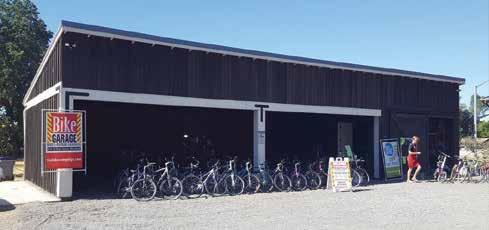
FREE BIKE REPAIR
and USED BIKE SALES every Saturday morning from 9am-noon, and Wednesday afternoons from 2-5pm, at The Bike Garage at The Cannery, 1500 Cannery Avenue, behind the big barn.
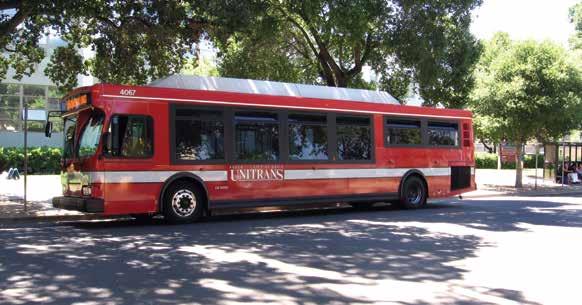
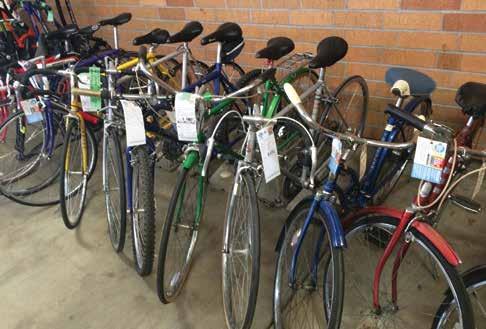
Contact: Maria Contreras Tebbutt at (530) 753-1125 (NO TEXTS) or funmaria@sbcglobal.net
Unitrans would like to thank the community for their continued support as well as all of our front-line workers for sticking by us.
